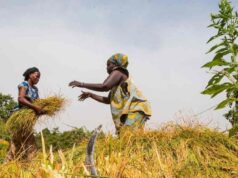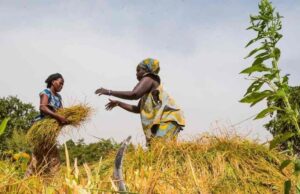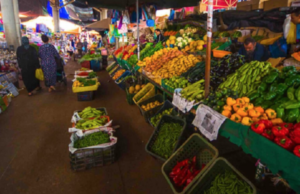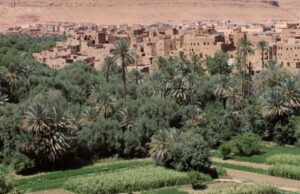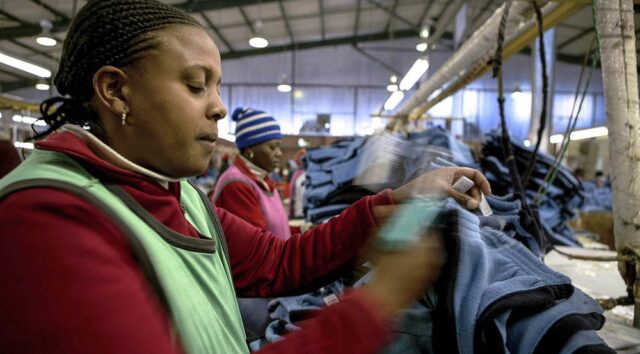
(3 Minutes Read)
Lesotho’s economic growth slowed to an estimated 0.9 percent in 2023 from 1.3 percent in 2022, as manufacturing and domestic demand took a hit. This is according to the recent African Development Bank (AfDB) Country Report 2024.
The report titled ‘Driving Lesotho’s Transformation’, indicates that the lacklustre economic growth of recent years was attributed to the challenges facing Lesotho’s textile industry, which accounts for about 21 percent of the Gross Domestic Product (GDP). In June this year, two Ace Apparel (Pty) Ltd factories in Maputsoe, Leribe shut down, leaving 1 500 workers jobless. This brings about 20,000 workers who have lost jobs in the clothing and textile industry since 2019. According to the Lesotho Labour Council (LLC), approximately half of these were retrenched in 2023. The sector was now facing strong competition in the United States market from Asian producers, and increasingly from Ethiopian and Kenyan producers, leading to a drop in export volumes to the US.
The report also reveals that the domestic inflationary pressures have eased faster than expected, with outcomes reaching their lowest level in three years in July 2023. Inflation declined to about 6.4 percent in 2023 from 8.3 percent in 2022, driven by falling imported food and energy prices. In light of this, global food prices are moderating due to record grain production.
To anchor inflation expectations and support the exchange rate peg, the Central Bank of Lesotho has continued to track the policy rate changes of the South African Reserve Bank, raising rates by 425 basis points since November 2021.
“Lesotho’s currency (loti) is pegged at par to the South African rand. The loti depreciated against all major currencies in 2023, including the euro (12.58 percent), the pound (24.73 percent), and the dollar (29.63 percent) owing to the depreciation of the South African rand.
In 2023, the fiscal balance was estimated at a surplus of 1.0 percent of GDP, compared with a deficit of 4.3 percent in 2022 due to a recovery in SACU (Southern African Customs Union) revenues. The fiscal deficit will be financed by both domestic and external borrowing, while the surpluses will lead to an accumulation of government deposits in the banking sector. The present value (PV) of public and publicly guaranteed (PPG) external debt-to-GDP reached close to the 40 percent threshold in FY 2020/21, about 10 percentage points higher than the 2019 debt sustainability analysis (DSA),” the report notes.
It adds that the gross public debt-to-GDP ratio has increased by 4.1 percentage points to 59.8 percent of GDP in FY 22/23, reflecting both exchange rate valuation effects on external debt and growing domestic debt issuance. Official reserves are estimated to accumulate and reach the equivalent of 4.7 months of import cover in 2023 and improve to 5.3 months of import cover in both 2024 and 2025. Increased SACU revenue is expected to boost reserve accumulation during 2023-2025. However, the increase is likely to be dampened by growth in government expenditure.
The current level of reserves is sufficient to maintain the exchange rate peg, bolstered by the recent SDR allocation, the report says. High imports of goods and services related to the second phase of the Lesotho Highlands Water Project (LHWP II) are expected to continue to drive the current account deficits. Most of the current account deficit will be financed through capital transfers associated with the LHWP II, the report adds.
According to the World Bank, Lesotho’s interest payments (percent of revenue) were reported at 3.35 percent in 2022. The primary balance to GDP ratio deteriorated from -4.0 percent in 2022 to -5.9 percent in 2023 and is projected at -5.3 percent and 3.8 percent in 2024 and 2025, respectively. Official reserves are projected to accumulate and reach the equivalent of 4.7 months of import cover in 2023 and improve to 5.3 months of import cover in both 2024 and 2025. Lesotho’s debt indicators are expected to deteriorate in the near term before improving over the medium term, supported by recovering SACU transfers and slower growth in public expenditure relative to GDP. The country’s moderate risk rating points to limited shock-absorption capacity.
The report states that external debt accounts for 74 percent of total public debt and is predominantly owed to multilateral partners on concessional terms. The main creditor is the International Development Association (IDA), followed by the African Development Fund (AfDF), the European Investment Bank (EIB), and the International Monetary Fund (IMF).
Read Also:
As part of measures to contain debts, the government of Lesotho was deepening the domestic capital market, improving the efficiency of capital spending, building buffers against future shocks, preventing the crowding out of credit to the private sector, addressing contingent liability risks among others, the AfDB shows.




